Pashupatinath Temple, located in Kathmandu, Nepal, is one of the most sacred Hindu shrines in the world. This ancient temple dedicated to Lord Shiva is located on the banks of the Bagmati River. It is a major pilgrimage location that gathers millions of followers every year. The temple is a treasure store of cultural and religious importance due to its long history that began in 400 B.C. Its regular ceremonies and complex construction provide a window into Nepal’s spiritual legacy.
Location
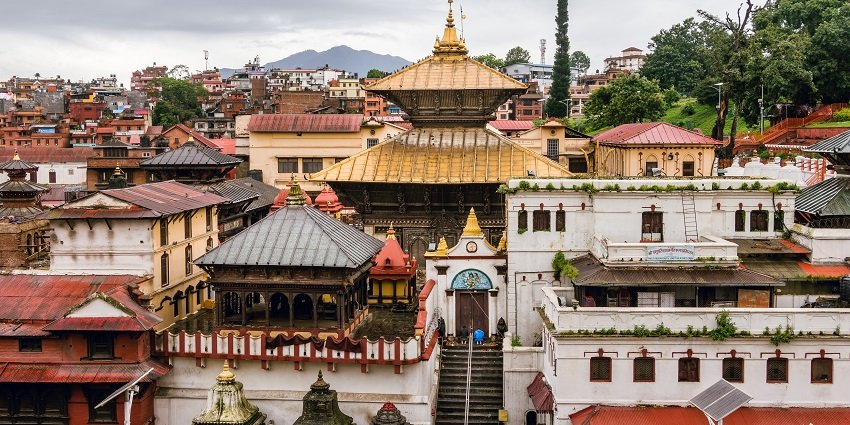
Photo: Bijay Chaurasia / Wikimedia Commons
The Pashupatinath Temple sits on the banks of the Bagmati River, 5 km northeast of Kathmandu, Nepal. It covers 246 hectares on the eastern border of the Kathmandu Valley. The main Pashupatinath Temple in India, a Hindu architectural wonder, has the same significance as the Pashupatinath Temple in Kathmandu. The temple’s location by the Bagmati River accentuates its spiritual significance in the Hindu faith. Pashupatinath Temple address is Pashupati Nath Road, Kathmandu, Nepal.
Suggested Read: Bungee Jumping In Nepal
How To Reach Pashupatinath Temple
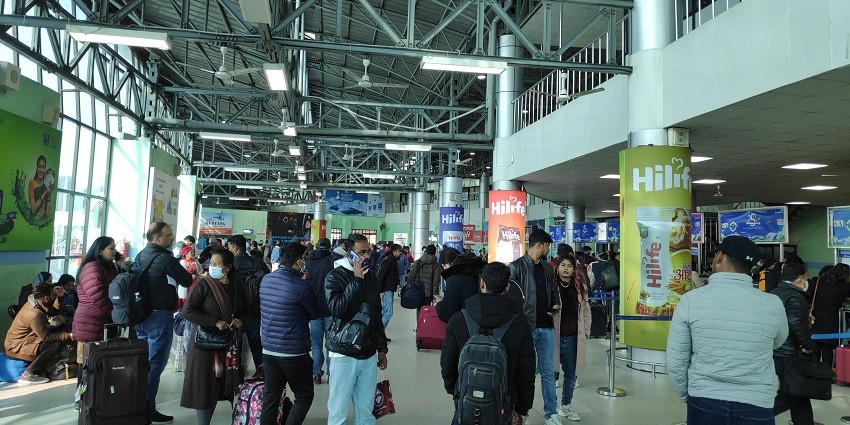
Photo: Gaurav Dhwaj Khadka / Wikimedia Commons
You can easily reach Pashupatinath Temple by air, road or rail:
By Air: The nearest airport in Kathmandu is Tribhuvan International Airport. Get to the temple via taxi or airport shuttle upon arrival. Traffic determines how long the airport travel takes between 20 and 30 minutes.
By Rail: As there is no direct train to reach Kathmandu from India, one can choose to travel to Janakpur in Nepal from Jainagar in India. Once in Kathmandu city, it is only a six hours taxi drive to the entrance of Pashupatinath Temple.
By Road: Long-distance buses arrive at Kathmandu’s Gongabu Bus Park or Kalanki Bus Park. From there, go to Pashupatinath Temple via local bus or cab. Local buses follow set routes, while taxis offer more direct travel.
Places To Visit In And Around Pashupatinath Temple
These are many sites highlighting Nepal’s rich cultural legacy including these places:
1. Kathmandu Durbar Square
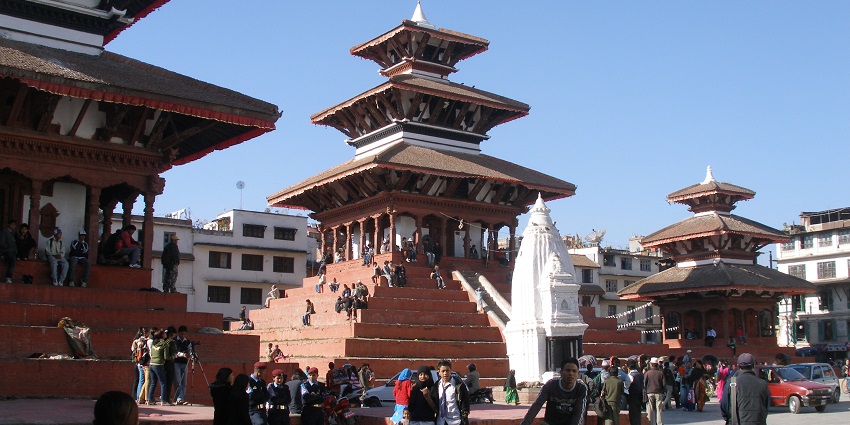
Photo: Vyacheslav Argenberg / Wikimedia Commons
Kathmandu Durbar Square is one of Nepal’s three royal squares. Considered the museum of temples, it features more than 50 courtyards, palaces, and temples. Three basic sections make up the square: Hanuman Dhoka, central Durbar Square, and Basantapur Square. Visitors can see the mix of Hindu and Buddhist inspirations and appreciate the complex Nepalese architecture. The square’s history dates back to the third century, with numerous buildings reconstructed after earthquakes.
Timings: 24*7
Entry Fee: NPR 1000 / ₹624 for foreigners, NPR 150 / ₹93 for SAARC nationals
Suggested Read: Himalaya Base Camp Trek
2. Swayambhunath Temple
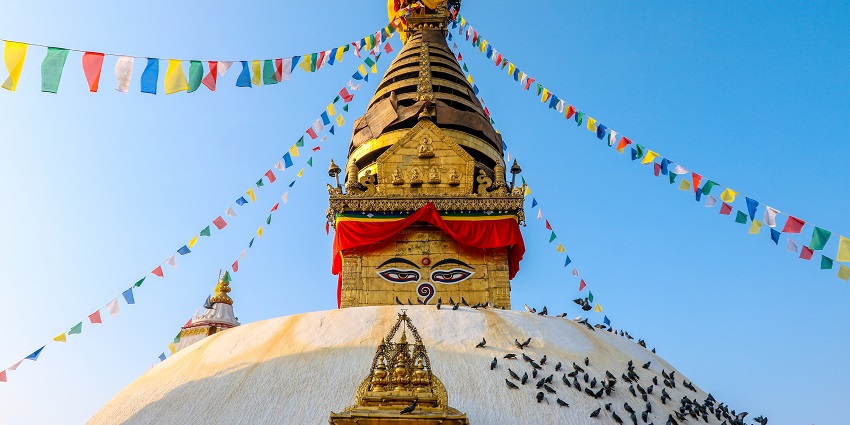
Photo: irmal Dulal / Wikimedia Commons
Perched atop Semgu Hill, Swayambhunath Temple is a Buddhist temple, commonly known as the Monkey Temple, revered by Buddhists and Tibetans. Visitors must climb 365 steps to reach the top, where an amazing panoramic view of Kathmandu awaits. The temple complex has a white dome stupa, several shrines, and different coloured prayer flags. One theory holds that walking the temple clockwise cleanses sins. The site’s history spans over 1,500 years, making it one of the oldest religious sites in Nepal.
Timings: 24*7
Entry Fee: NPR 200 / ₹125 for foreigners, NPR 50 / ₹31 for SAARC nationals
3. Garden Of Dreams
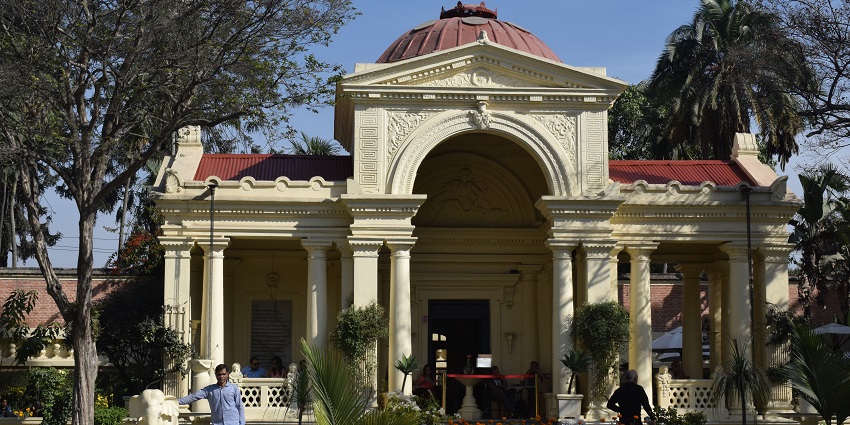
Photo: Dolon Prova / Wikimedia Commons
The Garden of Dreams is a neo-classical garden in Kathmandu. Designed by Kishore Narshingh in 1920, it’s often referred to as “Swapna Bageecha” or “garden of six seasons.” The park has a great amphitheatre, ornate urns, pavilions, paved walks, pergolas, and ponds. Following the death of its patron, the Austrian government painstakingly rebuilt it. Today, it provides a quiet haven among the busy streets of Kathmandu, allowing guests to unwind and take in the splendour of the surroundings.
Timings: 10 AM to 6 PM daily
Entry Fee: NPR 200 / ₹125 for foreigners, NPR 100 / ₹62 for locals
Suggested Read: Enjoy Trekking In Nepal
4. Kopan Monastery
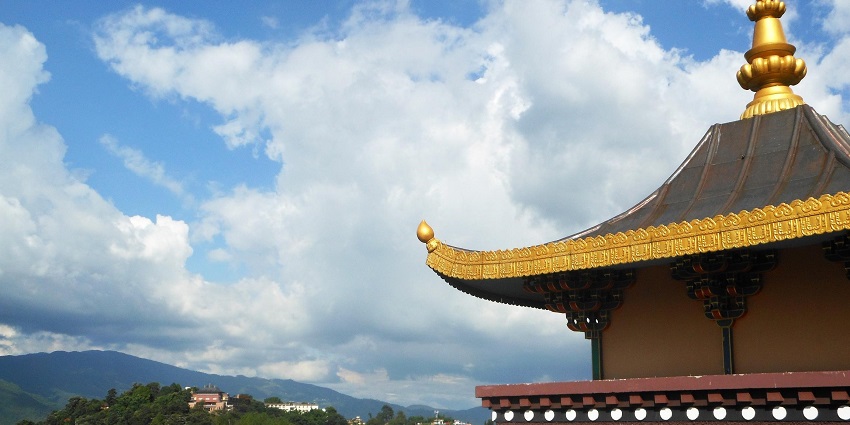
Photo: Aleksandr Rain / Wikimedia Commons
Kopan Monastery, situated on the Kopan Hills, is a popular place for those interested in Tibetan Buddhism. Having started in the late 1960s, it is a 20-minute drive from the centre of Kathmandu. From brief visits to week-long retreats and lectures on Tibetan Mahayana Buddhism, the monastery offers a range of activities. Open to everyone, its calm campus has study rooms, meditation halls, and lovely gardens. The on-site café offers vegetarian food, and visitors may stroll slowly around the calm surroundings.
Timings: 10 AM to 4 PM daily
Entry Fee: Free
5. National Museum Of Nepal
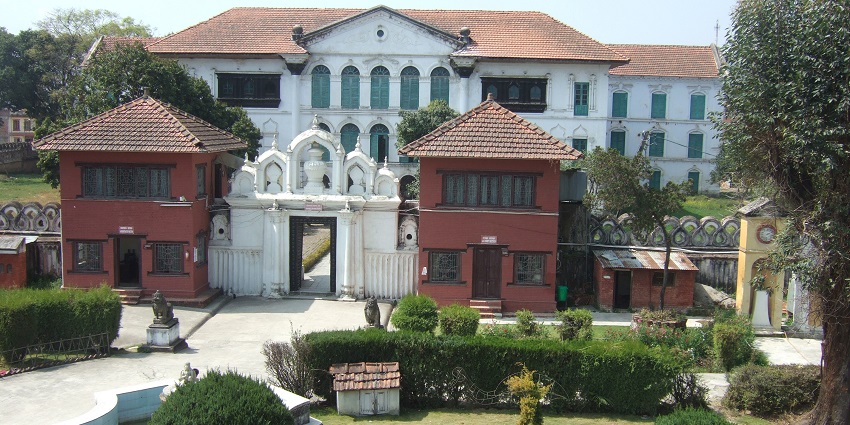
Photo: Clemensmarabu / Wikimedia Commons
Preserving Nepal’s rich history is the century-old National Museum of Nepal, often known as Rashtriya Sangrahalaya. It comprises three buildings: Historical Museum Building, Buddhist Art Gallery, and Juddha Jayatia Kala Shala. Showcasing weapons, artworks, coins, sculptures, and postage stamps, the museum has cultural, historical, and philatelic departments. Being the biggest museum in Nepal, it is important for archaeological study and museum growth all around. Visitors may see displays that depict the country’s lengthy history of conflicts, cultural accomplishments, and creative legacy.
Timings: 10:30 AM to 4:30 PM (Closed on Tuesdays and public holidays)
Entry Fee: NPR 150 / ₹93 for foreigners, NPR 20 / ₹12 for locals
Suggested Read: Jungle Safari In Nepal
Where To Stay

Photo: Hangjeebatt / Pixabay / Image For Representation Only
To fit different budgets and tastes, Kathmandu has a selection of accommodations close to Pashupatinath Temple. Kailash Kuti Inn offers a laid-back vibe along with a rooftop deck. The Dwarika’s Hotel provides high-luxury accommodations, including many restaurants and a spa. Hyatt Regency Kathmandu has many high-end conveniences like tennis courts and outdoor pools. Mahadev Hotel Kathmandu offers temple-view casual rooms. From cheap to luxurious, these choices meet various demands and guarantee guests a pleasant stay at this holy location.
Where To Eat
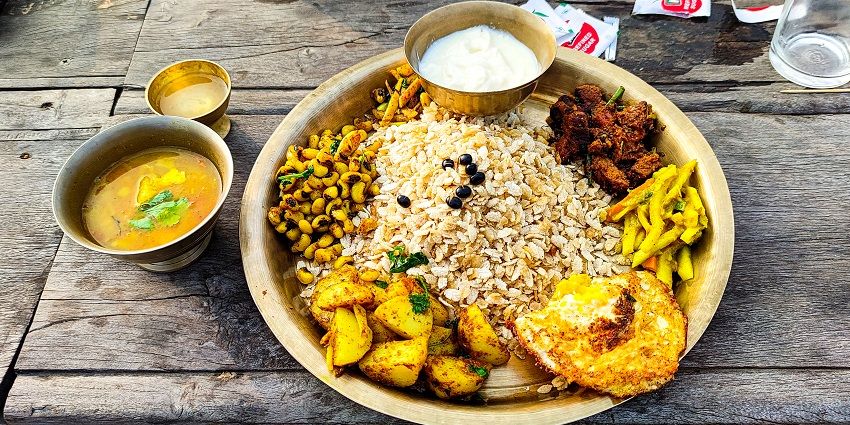
Photo: Sherin / Wikimedia Commons / Image For Representation Only
Visitors to Pashupatinath Temple Nepal have several food choices around. Bhojan Unlimited offers family-friendly surroundings with diverse cuisine. Dine and Feast Bar and Restaurant offers all-day eating just near the temple. Koyla Tandoori Restaurant delivers tandoori specialities all around the clock. Resunga Tandoori Restaurant and Guest House offers both eating and accommodation options. These restaurants provide local and international cuisines, therefore accommodating different preferences and timetables. There are appropriate choices nearby for both a leisurely dinner and a fast snack.
Suggested Read: Chitwan Jungle Safari
Best Time To Visit
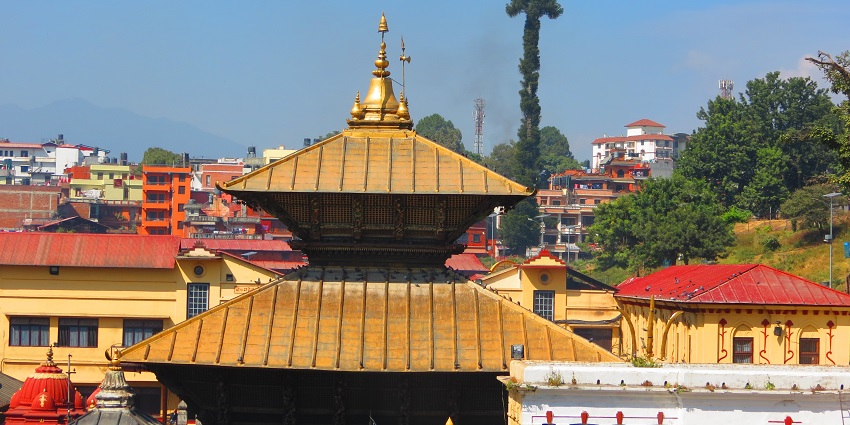
Photo: Bhattaraimadhav.nepal / Wikimedia Commons
Visiting Pashupatinath Temple is best done during the dry seasons from September to November and February to April. These months offer pleasant weather for exploring the complex. Early mornings or late afternoons provide peace and less traffic. Consider going around significant Hindu festivals such as Maha Shivaratri, which normally take place in February or March. Still, be ready for more crowds during these celebratory times.
Other Factors To Consider
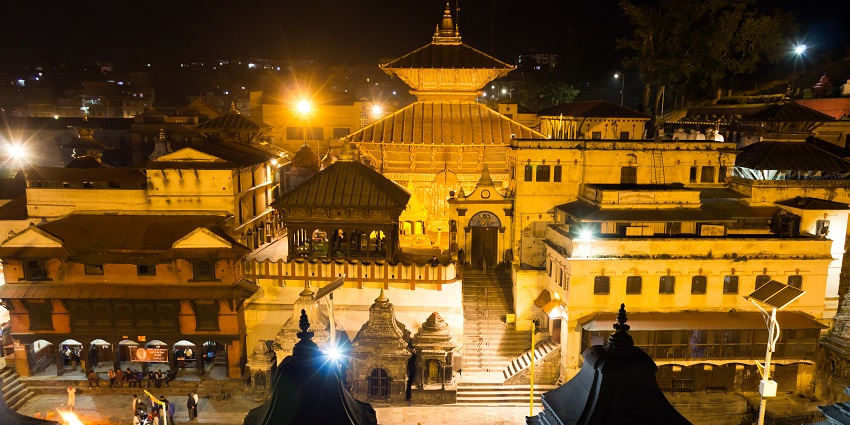
Photo: Bijay Chaurasia / Wikimedia Commons
Pashupatinath Temple timings are 4 AM to 12 PM and again from 5 PM to 9 PM in the night.
Tips For Travellers
- Dress modestly, covering shoulders and knees, as a sign of respect.
- Remove shoes before entering the main temple complex.
- Pashupatinath temple photos are restricted in certain areas; always ask for permission.
- Be mindful of ongoing religious ceremonies and maintain a respectful distance.
- Carry small denominations of local currency for offerings or small purchases.
- Stay hydrated, especially during warmer months.
Suggested Read: Guide To Royal Chitwan National Park Nepal
A monument to Nepal’s rich spiritual legacy is Pashupatinath Temple. This holy location provides guests with a very clear window into Hindu customs and culture. The temple complex is a must-see, from its remarkable design to the moving rituals beside the Bagmati River. All set to travel this spiritual path? Let TripXL arrange your ideal journey to Kathmandu with a visit to Pashupatinath Temple.
Cover Photo: Harry Paudyal / Wikimedia Commons


 WhatsApp
WhatsApp
 Twitter
Twitter









